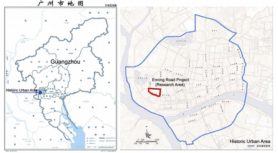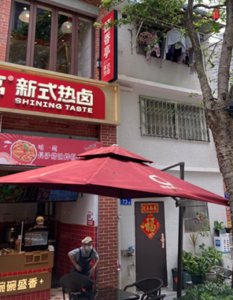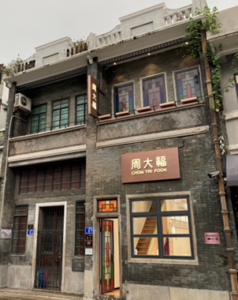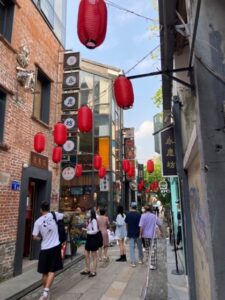Guangzhou: Enning Road Redevelopment Project

Location of Enning Road (from Zhang & Li, 2016)
The Enning Road area, located in the Liwan District of Guangzhou, is renowned for its traditional architecture and the preservation of the native residents’ lifestyle. Since 2006, the area has undergone lengthy and contentious redevelopment processes. Initially, the local government intended to expropriate and demolish most of the old buildings in the area. The municipal and district governments were responsible for compensating and relocating the original residents, while real estate companies were tasked with designing and constructing new developments. The early redevelopment scheme prioritized economic development, envisioning the replacement of traditional houses with modern high-rise commercial and residential buildings. From the outset, the project attracted widespread public attention due to the planned demolition of historical buildings and the controversial relocation schemes. Housing demolition began in 2008, and by 2012, approximately 70% of the original residents had agreed to the compensation and relocated. However, the demolition stalled due to conflicts over relocation, compensation, and heritage preservation, leading to widespread public concerns. As a result, the redevelopment of the Enning Road area stagnated for several years.

Renovated areas in the Enning Road micro-regeneration project (from Xiaomeng Zhou, July 2022)-1

Renovated areas in the Enning Road micro-regeneration project (from Xiaomeng Zhou, July 2022)-2

Renovated areas in the Enning Road micro-regeneration project (from Xiaomeng Zhou, July 2022)-3
In 2015, the Guangzhou municipal government introduced a new urban regeneration method called micro-regeneration in its first municipal urban renewal policy. The Enning Road area was selected as the pilot project for this method in 2016. Due to funding shortages, the Liwan District government outsourced the project to the Vanke Group, a real estate company, under a BOT (build–operate–transfer) contract. The developer was required to rebuild or renovate government-owned houses in the area according to government guidelines. In return, the developer was granted management rights to the renovated buildings for a specified period to recoup its investment. The project was implemented in two phases, with the developer holding management rights for the first phase for 15 years and the second phase for 20 years. At the end of the management period, the developer would transfer the area back to the district government.
The first phase of the project began in February 2016 on an approximately 8,000 m² plot called Yongqingfang. This phase involved renovating vacant government-owned buildings and communal spaces, while resident-occupied dwellings remained untouched. By October 2016, the plot had been transformed into a mixed-use area combining commercial and residential spaces. However, the Yongqingfang project faced strong criticism from the local media and the public for the architectural style of the renovated buildings, the destruction of resident-occupied houses, and the lack of transparency and citizen participation.
The second phase of the project commenced two years later, in September 2018, covering the remaining 90,000 m² of the Enning Road area. In response to social concerns and criticisms regarding the first phase, the local government established the Enning Road Co-Creation Committee at the start of the second phase. The committee consists of 25 formal members, including 12 residents from the area. The remaining members are officials from the district government and street offices, planning and architecture professionals, employees from the real estate company, planning professors from local universities, representatives of local media, and members of local Party organizations. The committee held regular meetings to discuss issues arising during the second phase of the project and to resolve and oversee various conflicts in the project’s implementation and management. These meetings were open to the public, allowing concerned citizens to report issues through a committee member or participate in the meetings directly.

